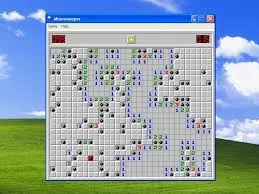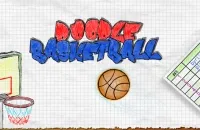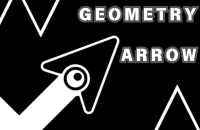Minesweeper
Minesweeper
Connecting to game server...
0% complete

Minesweeper
Click to start playing
🕹️ You May Also Like












Minesweeper
The iconic logic puzzle requiring careful deduction to clear minefields using number clues. Click squares to reveal adjacent mine counts and clear the grid.
Minesweeper is the iconic logic puzzle that has challenged players for decades. Click on squares to reveal numbers that indicate how many mines are adjacent to that square. Use logical deduction to identify safe squares and flag potential mines. The goal is to clear the entire grid without detonating any mines. This timeless game sharpens logical thinking and pattern recognition skills.
🎮 How to Play
- 1Left click to reveal squares
- 2Right click to flag mines
- 3Numbers show adjacent mine count
💡 Game Tips
- 💡Start with corners and edges
- 💡Use number clues to deduce mine locations
- 💡Flag suspected mines to avoid mistakes
- 💡Look for patterns in number arrangements
📚Complete Strategy Guide
Master Minesweeper with our comprehensive guide and pro tips
Basic Strategy
Minesweeper is the legendary logic puzzle that transforms mathematical deduction into thrilling gameplay where every click could mean victory or explosive defeat. Success requires systematic thinking, probability assessment, and pattern recognition skills that develop through practice and logical reasoning. The objective is to uncover all non-mine squares while avoiding the hidden explosive mines scattered throughout the grid.
Number Interpretation Mastery: Each revealed number indicates how many mines are adjacent to that square in the eight surrounding positions. Understanding this fundamental relationship enables logical deduction about mine locations and safe square identification. Numbers provide the clues necessary for systematic grid clearing without relying on guesswork.
Flagging Strategy: Use flags to mark confirmed mine locations, which helps track remaining mine counts and prevents accidental clicks on known dangerous squares. Effective flagging serves as both a safety mechanism and a logical tool for working through complex deduction chains involving multiple interconnected clues.
Safe Square Identification: Develop systematic methods for identifying squares that are guaranteed safe based on surrounding number clues. When a number's adjacent mine count is satisfied by flagged mines, all remaining adjacent squares are safe to click, forming the foundation of logical progression.
Deduction Chain Building: Learn to construct logical chains where solving one area provides information that unlocks solutions in adjacent areas. This cascading approach allows for solving increasingly complex configurations through step-by-step logical progression rather than random clicking.
Advanced Tips
Pattern Recognition Development: Master common mine patterns and their corresponding number configurations. Recognizing standard formations like 1-2-1 patterns, corner configurations, and edge arrangements enables faster problem-solving and reduces the mental effort required for complex deductions.
Probability-Based Decisions: When pure logic reaches its limits, apply probability theory to make educated guesses about remaining mine locations. Understanding statistical likelihood of mine placement in different configurations helps make optimal decisions when multiple possibilities exist.
Simultaneous Constraint Solving: Advanced play involves analyzing multiple intersecting constraints simultaneously to find solutions that satisfy all logical requirements. This technique becomes crucial in complex endgame scenarios where simple sequential deduction proves insufficient.
Edge and Corner Priority: Prioritize clearing edges and corners where fewer adjacent squares reduce complexity and often provide clearer logical pathways. These areas typically offer more definitive clues that can unlock solutions for more challenging interior sections.
Elimination Technique: Use process of elimination systematically by considering all possible mine arrangements for a given set of clues, then identifying arrangements that satisfy all constraints simultaneously. This methodical approach ensures no logical possibilities are overlooked.
Level Walkthrough
Opening Strategy: Begin games by clicking in corners or edges where mine probability is typically lower due to fewer adjacent squares. Opening moves should prioritize areas likely to provide useful information while minimizing explosion risk through statistical advantage.
Early Development: Focus on establishing a foundation of revealed squares that provide interconnected clues for logical deduction. Early game success depends on finding areas where number clues create clear logical chains for expanding the cleared region safely.
Mid-Game Progression: Apply systematic deduction techniques to work through increasingly complex clue interactions. Mid-game requires balancing methodical analysis with efficient progress, using established patterns and logical chains to maintain steady advancement.
Advanced Puzzle Solving: Navigate complex configurations requiring sophisticated logical reasoning and potential probability-based decisions. Advanced stages test mastery of all deduction techniques and may require careful risk assessment for optimal completion.
Endgame Precision: Complete final sections where every remaining click carries high stakes and requires perfect logical analysis. Endgame success demands flawless execution of deduction skills with minimal margin for error in logical reasoning.
Common Mistakes
Random Clicking: Making clicks without logical justification wastes the game's strategic depth and significantly increases explosion probability. Always base clicks on deductive reasoning or calculated probability assessment rather than impulse or guesswork.
Insufficient Flag Usage: Failing to flag confirmed mines creates confusion and increases risk of accidental mine clicks. Systematic flagging provides visual organization and supports complex logical reasoning by clearly marking dangerous areas.
Hasty Analysis: Rushing through logical analysis often leads to missed deductions or incorrect conclusions. Take time to thoroughly analyze number clues and their implications before making clicks, especially in complex or high-stakes situations.
Pattern Misidentification: Incorrectly recognizing or applying patterns can lead to false conclusions and dangerous mistakes. Verify pattern matches carefully and ensure all constraints are satisfied before acting on pattern-based deductions.
Ignoring Contradiction Checking: Failing to verify that deductions remain consistent with all available clues can result in logical errors. Always cross-check conclusions against multiple number constraints to ensure reasoning accuracy.
Score Optimization
Speed Development: Achieve faster completion times through efficient pattern recognition and streamlined logical analysis. Speed improvement comes from reduced thinking time rather than rushed execution, requiring deep familiarity with common logical scenarios.
Accuracy Maximization: Minimize accidental mine clicks through careful analysis and systematic approach to uncertain situations. Perfect accuracy demonstrates complete logical mastery and strategic decision-making under uncertainty.
Difficulty Progression: Master increasingly challenging grid sizes and mine densities to demonstrate comprehensive skill development. Progression through difficulty levels shows adaptability and scaling of logical techniques to more complex scenarios.
Consistency Achievement: Maintain reliable performance across multiple games and various configurations. Consistent success indicates genuine skill rather than occasional luck, demonstrating reliable application of logical principles.
Efficiency Optimization: Balance speed with accuracy to achieve optimal performance metrics that consider both completion time and success rate. Efficient play represents mastery of logical techniques with confidence in decision-making processes.
Final Pro Tips
Logical System Development: Create personal systems for analyzing complex configurations methodically rather than relying on intuition alone. Systematic approaches ensure comprehensive analysis and reduce errors in challenging situations.
Visualization Skills: Develop ability to mentally track multiple logical constraints simultaneously without losing track of complex interdependencies. Strong visualization supports advanced deduction techniques and reduces reliance on external notation.
Patience Cultivation: Accept that some puzzles require extended analysis time to solve correctly. Patience with difficult configurations often leads to breakthrough insights that rushed analysis would miss entirely.
Error Recovery: Learn from mistakes by analyzing what led to incorrect deductions or poor decisions. Understanding error patterns helps prevent similar mistakes and improves overall logical reasoning capabilities.
Mental Model Building: Develop internal models for how mine distributions create various number patterns. Strong mental models accelerate pattern recognition and logical reasoning in novel configurations.
Practice Variety: Challenge yourself with different grid sizes, mine densities, and playing conditions to develop comprehensive skills applicable to all Minesweeper variants. Varied practice prevents specialization in limited scenarios.
Concentration Management: Maintain focus during extended logical analysis without allowing fatigue to compromise reasoning quality. Mental endurance becomes crucial for solving challenging puzzles that require sustained analytical effort.
Community Learning: Study advanced techniques shared by expert players and participate in discussions about optimal strategies. The Minesweeper community has developed sophisticated approaches that can accelerate individual skill development.
Minesweeper represents the perfect fusion of logical reasoning with strategic risk management, offering players an intellectually satisfying puzzle experience that rewards systematic thinking, pattern recognition, and mathematical deduction through elegant gameplay that continues to challenge players decades after its creation.